This is a continuation of a test of the following lenses on the Sony a7RII:
- Zeiss 85mm f/1.8 Batis.
- Zeiss 85mm f/1.4 Otus.
- Leica 90mm f/2 Apo Summicron-M ASPH.
- AF-S Nikkor 85mm f/1.4 G.
- Sony 90mm f/2.8 FE Macro.
The test starts here.
I set out to measure longitudinal chromatic aberration for the various lenses. I don’t think that the test I came up with measures exactly that. However, it does measure something useful to photographers, something that I’m going to call on-axis color fringing.
I started out with my LaCA target, but centered in the image, with the camera cocked enough to give Imatest a nicely slanted edge to work with.
As you can see, there are two horizontal(ish) edges to work with to the right and left of the Siemens star, and two vertical(ish) edges to work with above and below the star.
I set the camera up and aimed it at a target. I lit the target with two Wescott LED panels set to full on and 5000K. ISO was 100. I did an aperture series for each lens. Then I demosaiced all the raw files with DCRAW and the AHD algorithm, exported them as TIFFs, and analyzed the CA in Imatest.
Imatest has a scalar measure of chromatic aberration that I used in the LaCA tests. It is not too good when lenses of quite different sharpness are being compared, since the sharper the lens, the worse the Imatest number gets. This was an irritation when I did the corner LaCA testing. On axis, the results are worse than useless; they are misleading. So, bear with me. I’m going to show you a bunch of curves, all for one particular edge. Fair disclosure: you get different curves when you pick different edges. I’ll spare you that level of detail, but I may go back and show you all four edges for a particular lens at a particular aperture in a later post.
If you twist my arm, I’ll show you the graphs of the Imatest chromatic aberration measure, but I’d rather not (although part of me would like to get something out of the hours I spent creating them).
So, let’s jump in to a few selected curves:
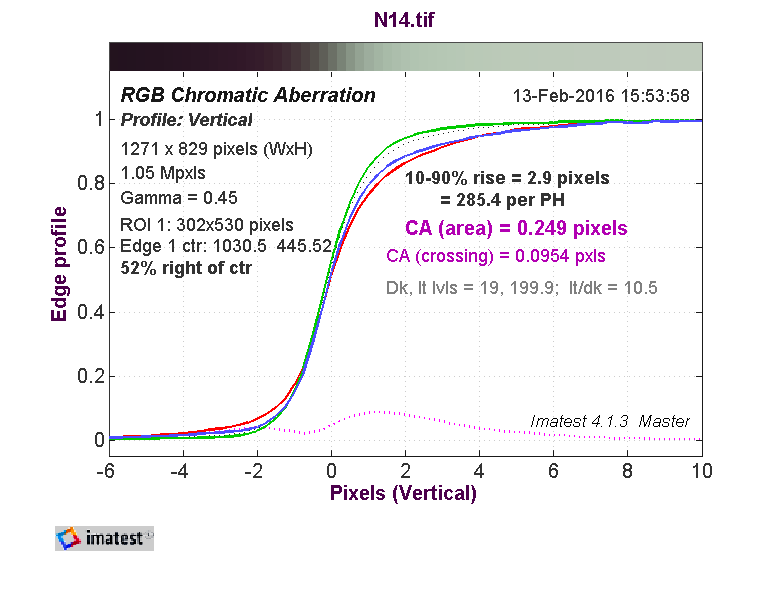
The Nikon wide open showed some on-axis color fringing in the landscape test that started out this lens comparison, and it looks like we may have found some of the problem here. On the white side of the transition, there is a five or six pixel wide band with a greenish cast.
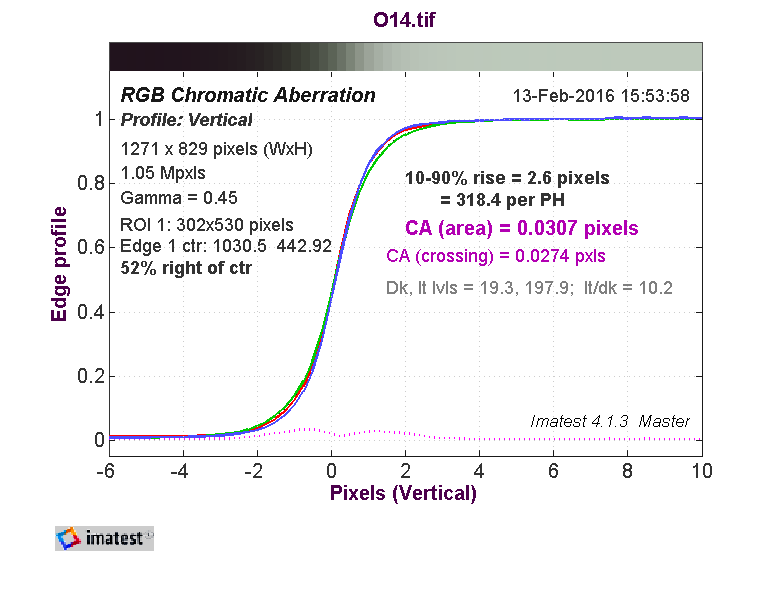
The Otus not only has a steeper transition, indicating that it’s sharper at this aperture, the transition is pretty much the same for all three color planes.
At f/2, we can show the results for all the lenses except the Sony macro.
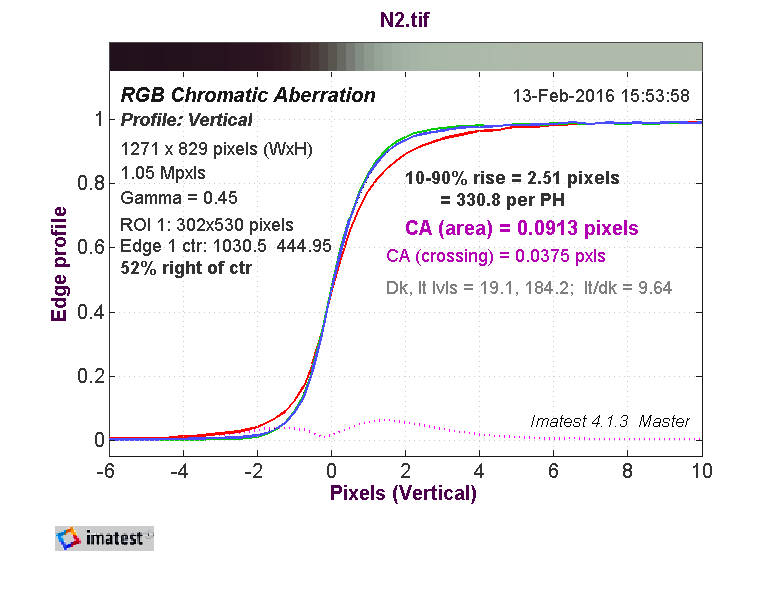
The Nikon is a lot better with respect to fringing at f/2.
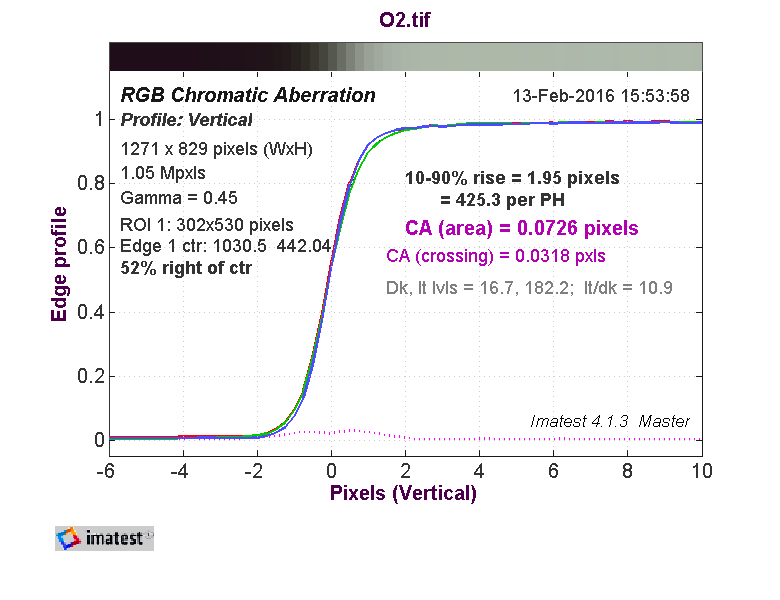
The Otus looks great.

The Batis looks good, too.
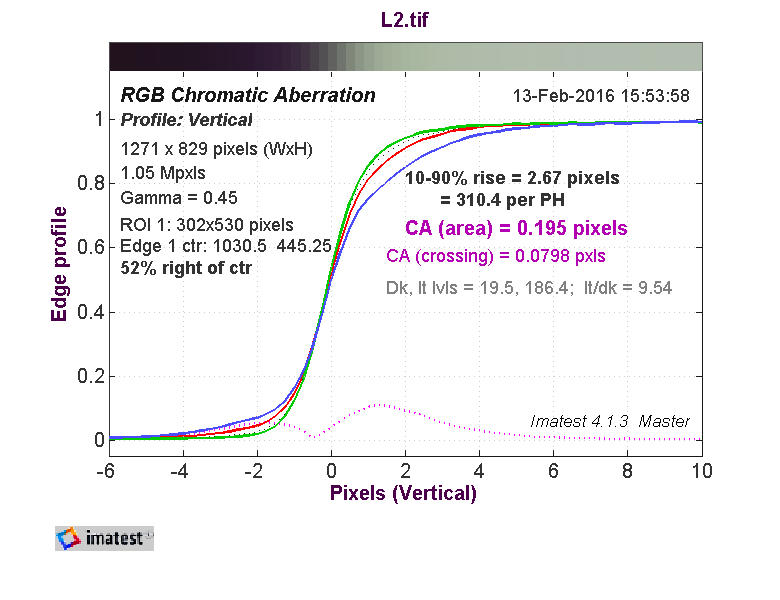
The Leica shows some of the same kind of problems the Nikon had wide open.
At f/2.8, we can bring the Sony into the mix:
Not the sharpest, but materially free of fringing.
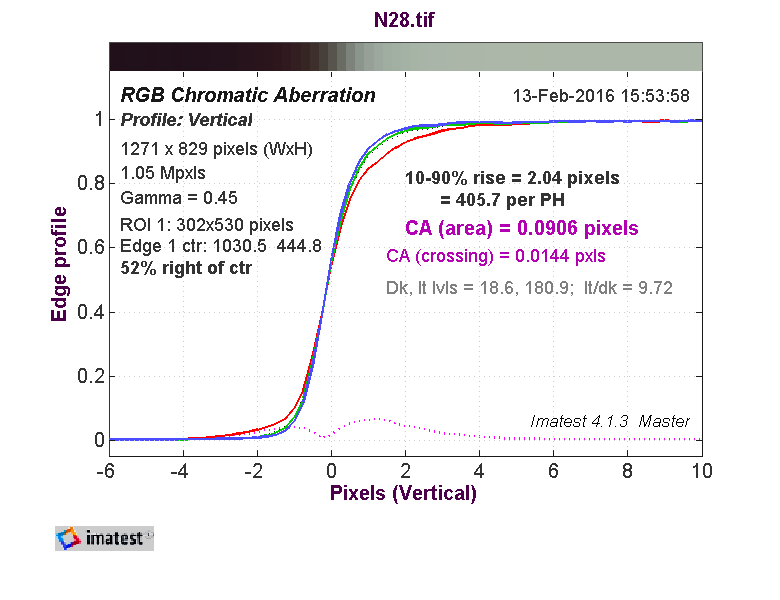
The Nikon is getting better, but has a ways to go.
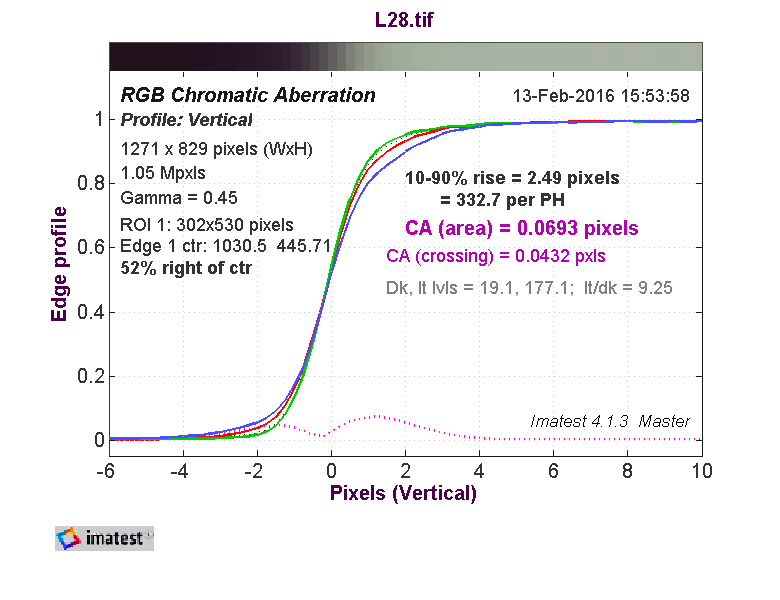
The Leica isn’t much better than it was at f/2.
I won’t show you the Otus and the Batis at f/2.8, since the curves are so good.
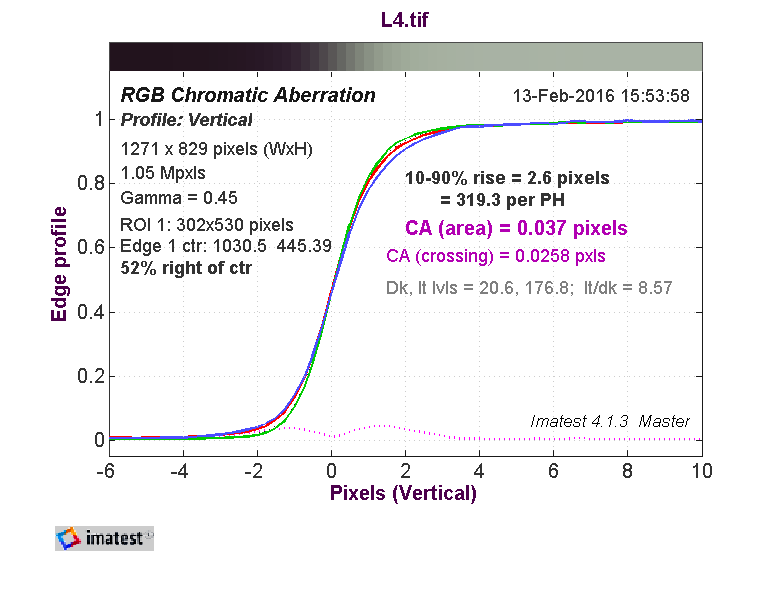
By f/4, the Leica has settled down, and looks good from there on out.
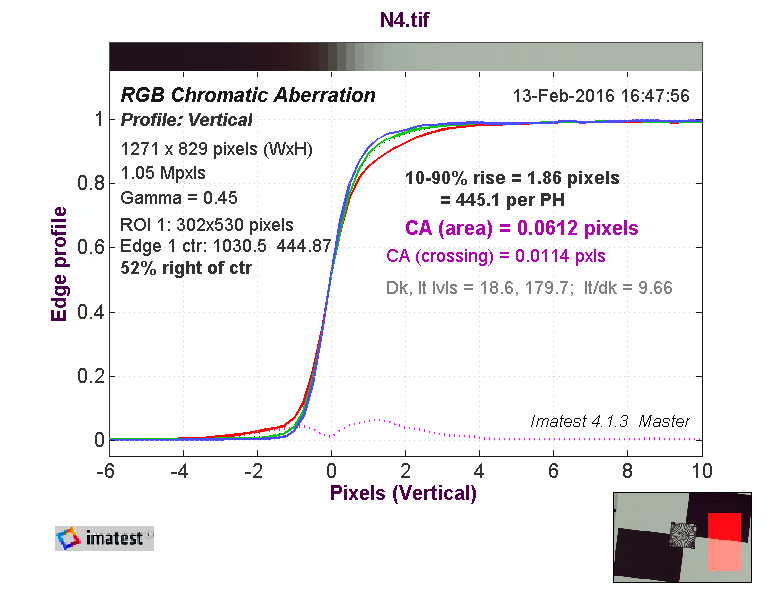
The Nikon still hasn’t caught up with the Leica, and is the loser of this little battle.
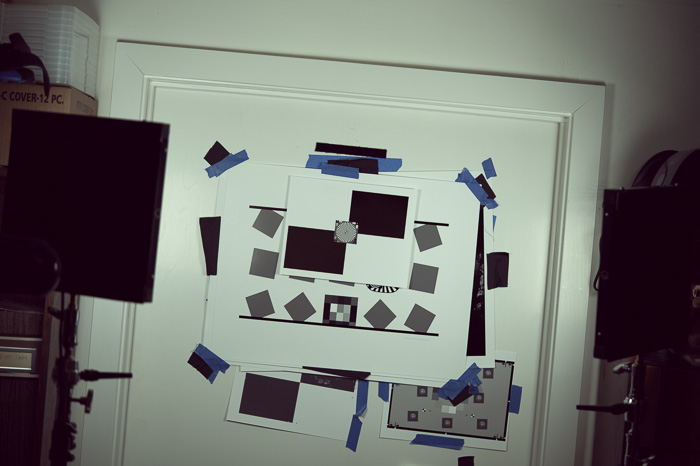
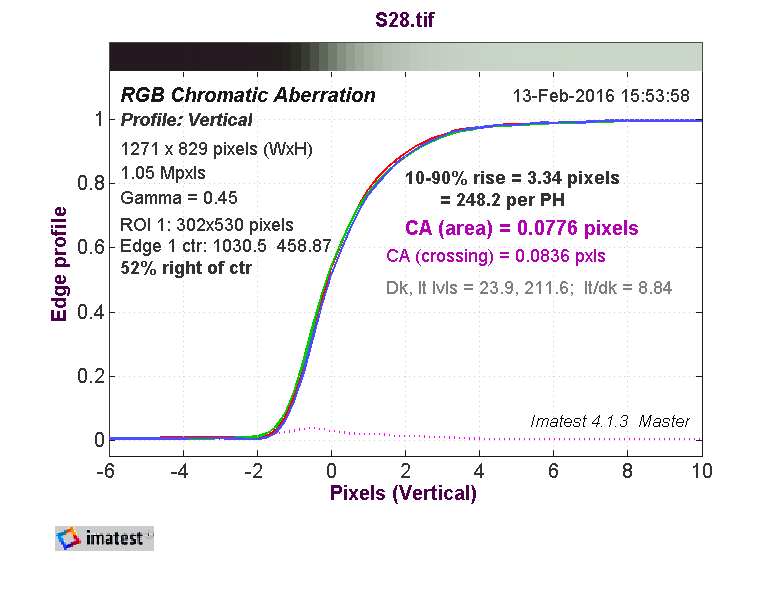
Leave a Reply